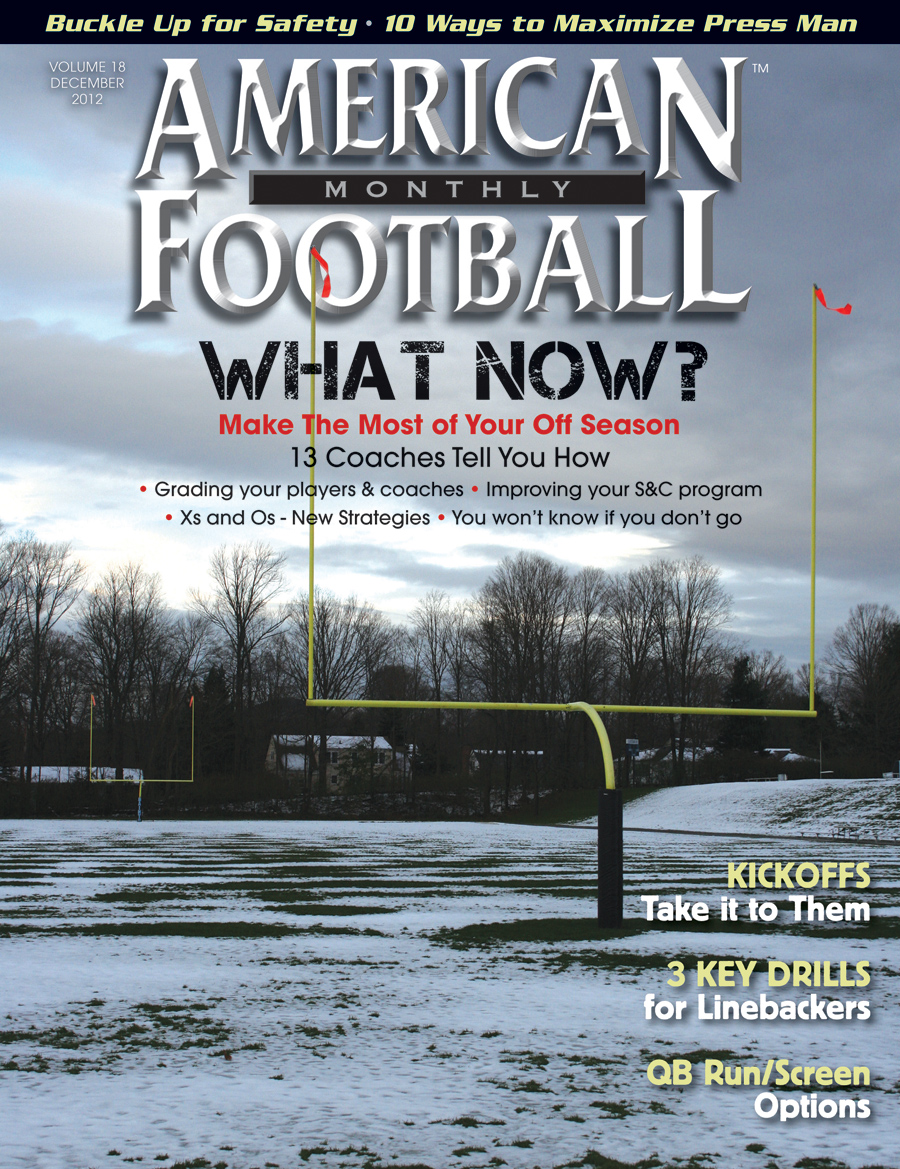QB RUN/SCREEN OPTIONS OFF THE ZONE RUN GAME
by: Rob TenyerOffensive Coordinator � Morehead State University©
More from this issue
Successful reads and following blocking rules gives an offense more opportunities.
Whether throwing or running the ball, coaches love to have options. Utilizing run/screen options off the zone run game has provided us the opportunity to take what the defense gives us. You can benefit from the concept no matter what type of athlete you have playing the quarterback position. The quarterback should only carry the ball when his read progression allows him to.
PHILOSPOPHY
The philosophy behind building screens into the zone run game is to run the best possible play. We do not want an unblocked player at the line of scrimmage dictating the outcome of a play. Having a run/screen threat off a run play creates specific advantages for our offense. A fast screen can be as successful as a run play, especially against zone pressure or run stunts.
BUILD SCREENS INTO THE PLAY
The concept of building screens into a run play has allowed us to combat typical defensive schemes, such as gap exchanges and zone pressures. We have developed a number of automatic screens based on field position, leverage and game preparation (See Diagram 1). We also employ a numbering system that dictates who performs the screen. The use of a three digit numbering system allows us to combine the zone run and screen, plus dictate what receiver runs the screen.
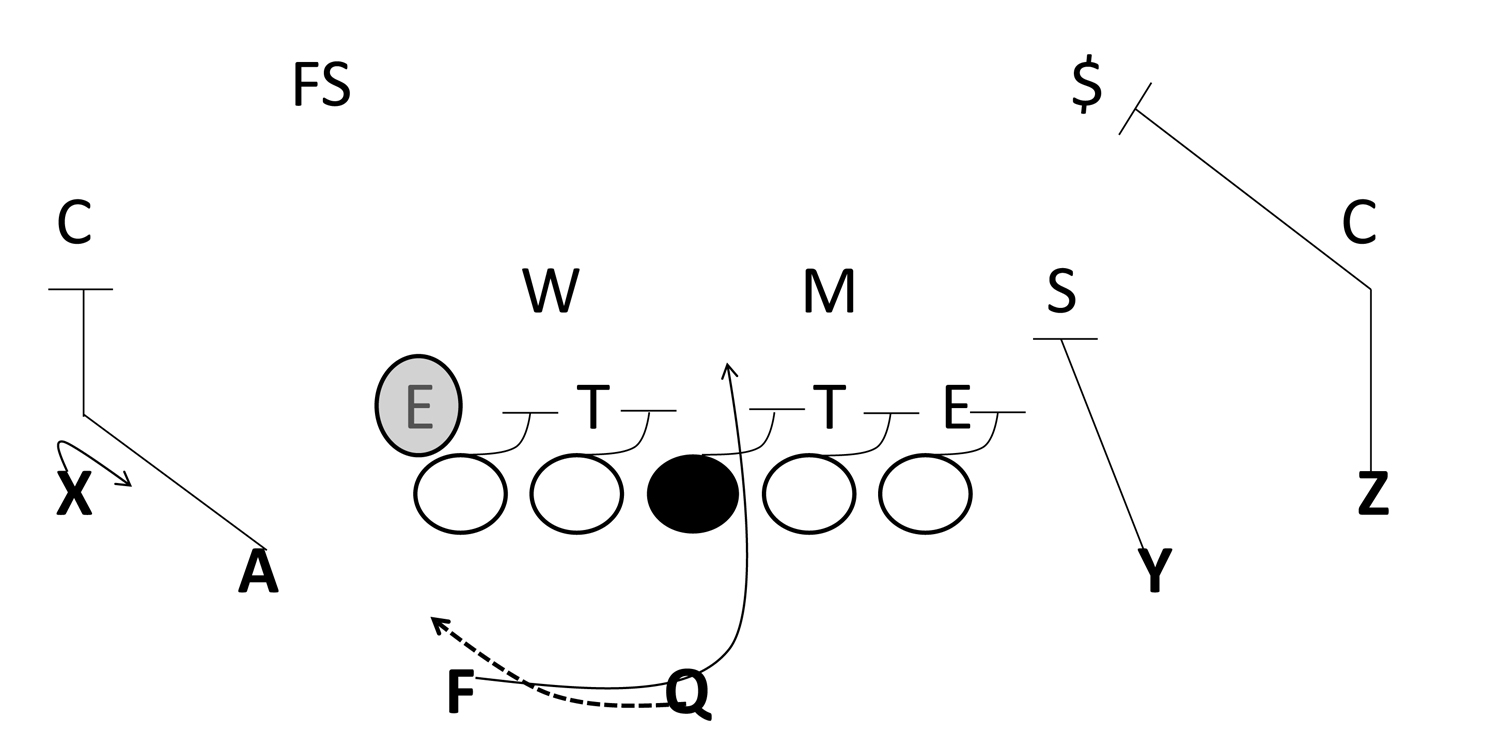
Diagram 1.
READS
The quarterback is taught to read pre-snap the backside leverage player and read post-snap the backside defensive end. The quarterback has the option to grip and rip the screen without a run mesh. The quarterback also has the option to run or throw a screen after he has identified the defensive end has committed to the zone run mesh.
BLOCKING RULES
For the Shoot Formation - the backside split end MOM (man on man) blocks the corner when there is no leverage player. He may have to adjust and block the most dangerous player vs. an invert defender (See Diagram 2).
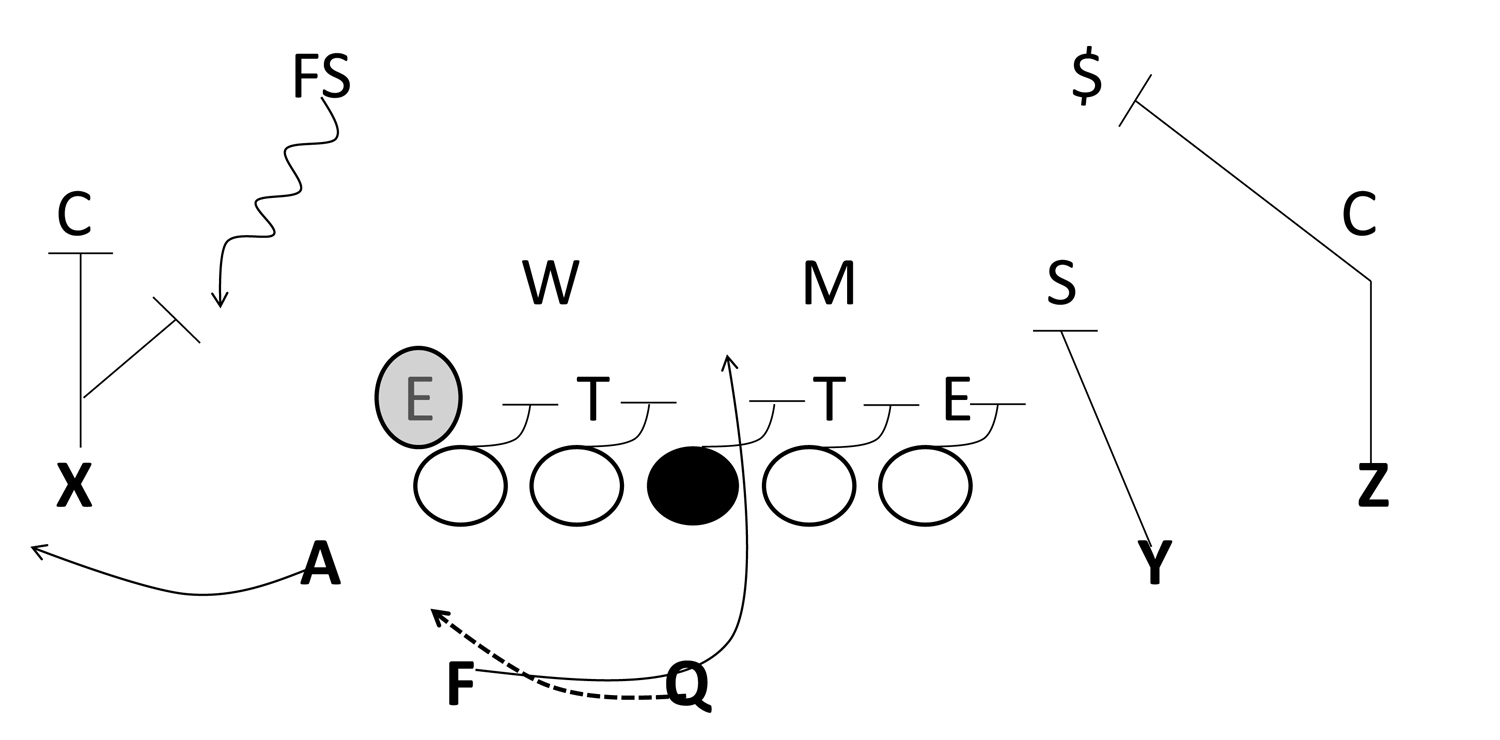
Diagram 2.
For the Trips Formation - the backside split end MOM blocks the corner. The number two wide receiver will block the leverage player (See Diagram 3). The backside split end can also make a �danger� call vs. a deep corner, which switches the blocking responsibilities between the two blockers (See Diagram 4).
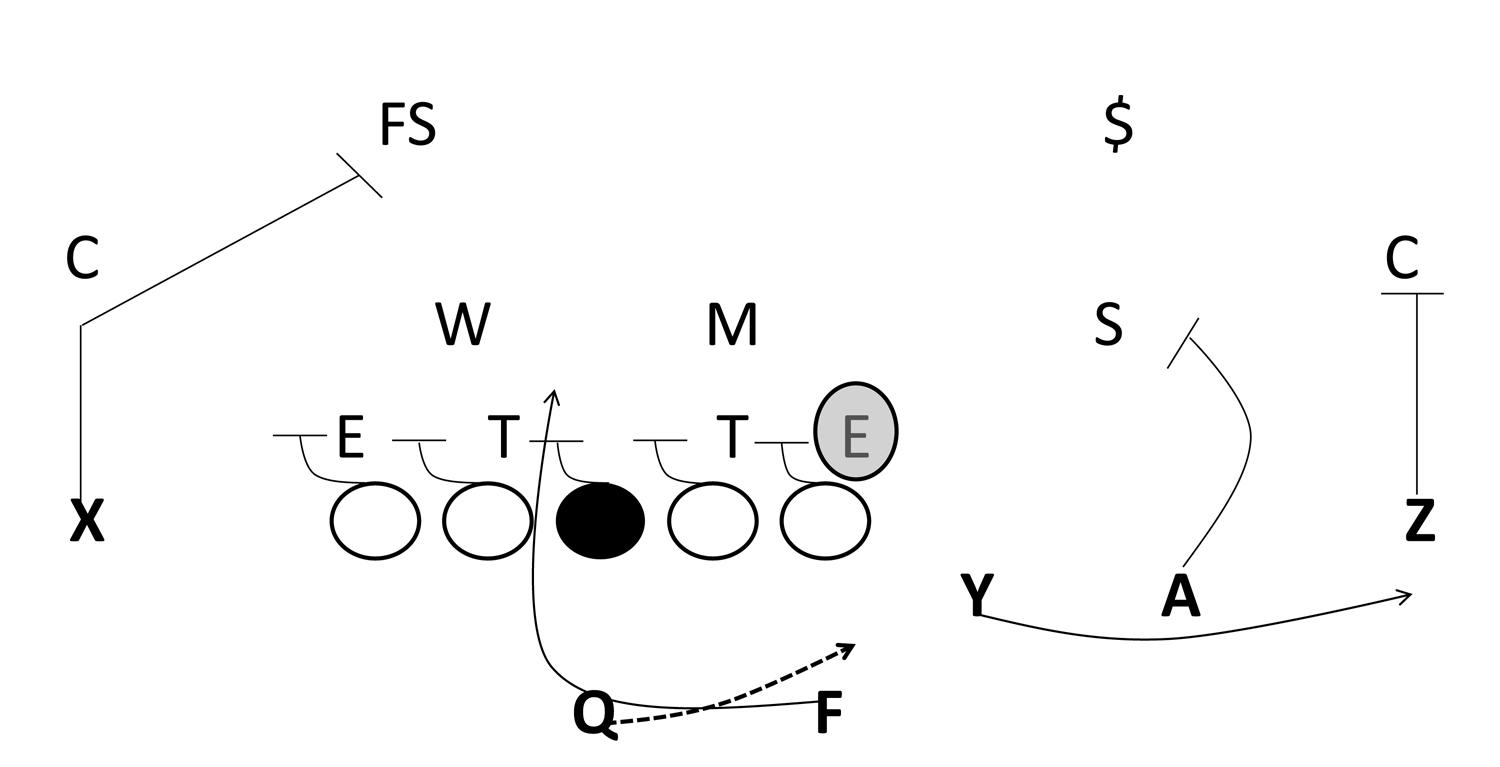
Diagram 3.
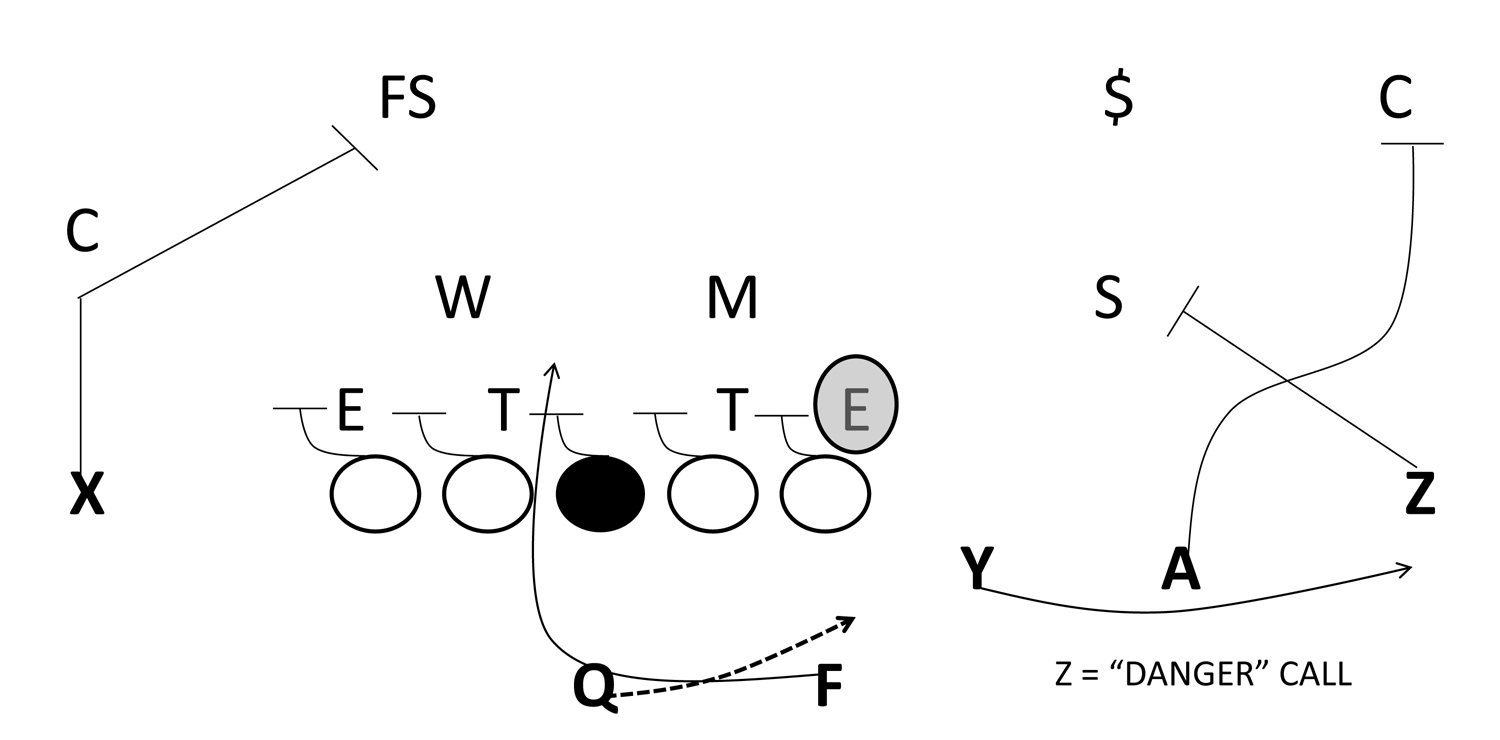
Diagram 4.
SCREEN VARIATIONS
There are two things that can dictate making alterations to the screen. The first is leverage, and the second is coverage. We typically stay clear of running a bubble screen into a squat corner, so the screen can be modified in order to throw the ball to the backside number two receiver (See Diagram 5). The last adjustment is to throw the screen to the backside split end (See Diagram 6).

Diagram 5.
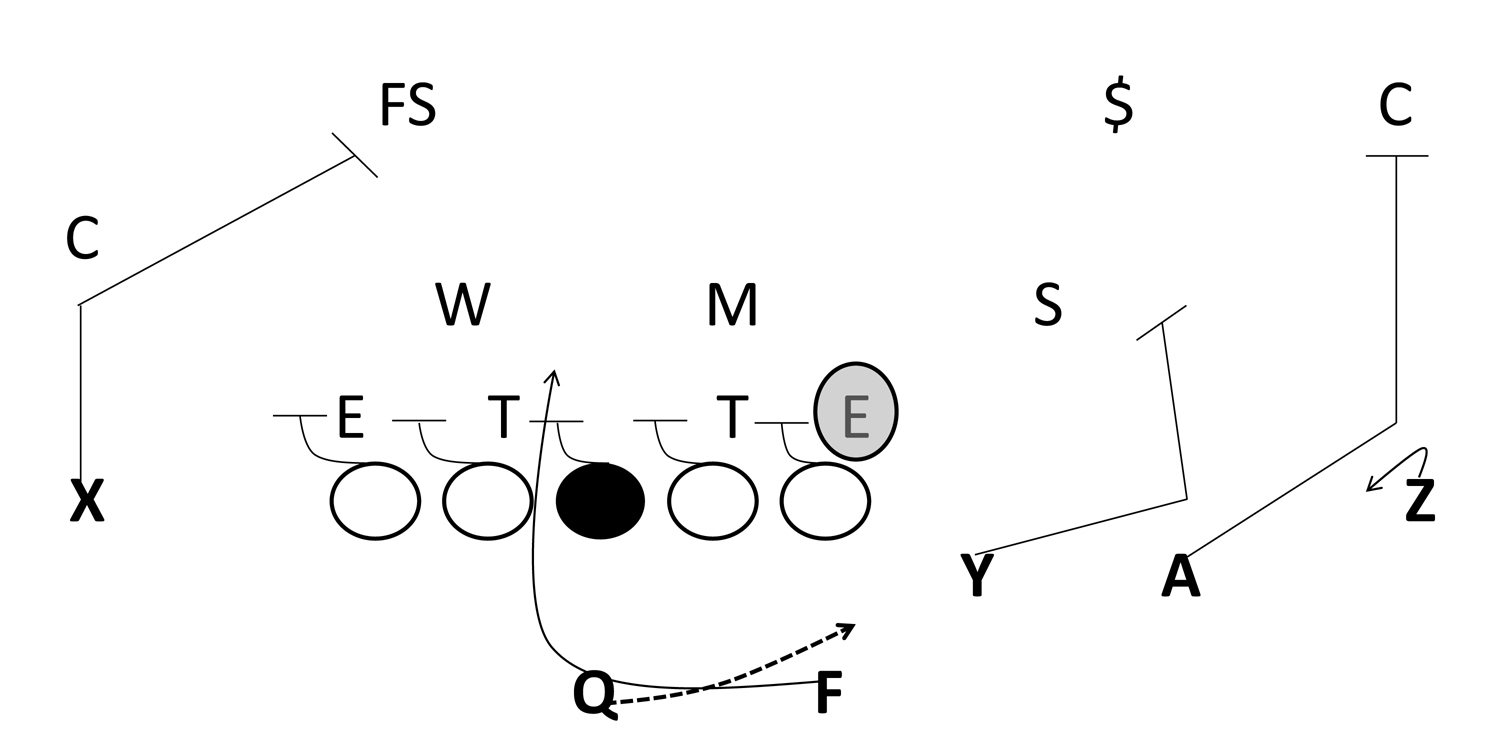
Diagram 6.
SCREEN TECHNIQUE
The player receiving the screen should foot fire and stick his outside toe in the ground. The receiver should pivot inside and give the quarterback his numbers. Catch the ball and get vertical. A player should step crossover on bubble screens, not surpassing one yard in depth. He should get as much width as possible.
BLOCKING TECHNIQUE
We stress three things in perimeter blocking � initial hand contact, body position (power angles), and leverage. Initial hand contact that stops a defenders charge creates the best opportunity to form a running lane. Feet should never stop (walking on hot coals). Lastly, we want to use the defender�s leverage to our advantage. Block the defender VERTICAL where he wants to go.
We coach our inside receivers to work flat one yard in front of the screen, with fast arms and fast feet. Work vertical to initiate contact and base block the first threat defender. This is only performed when an outside receiver will receive the screen (Diagrams 5 and 6).
CONCLUSION
There are distinct advantages to having run/screen options built into the zone run game. It is both productive and flexible, and there are numerous ways to build upon the concept. Over the years, we have run option and tagged the play for the quarterback to become the run threat (See Diagram 7). This concept has allowed us to dictate defensive alignments, which has provided us with better alternatives within our offense.
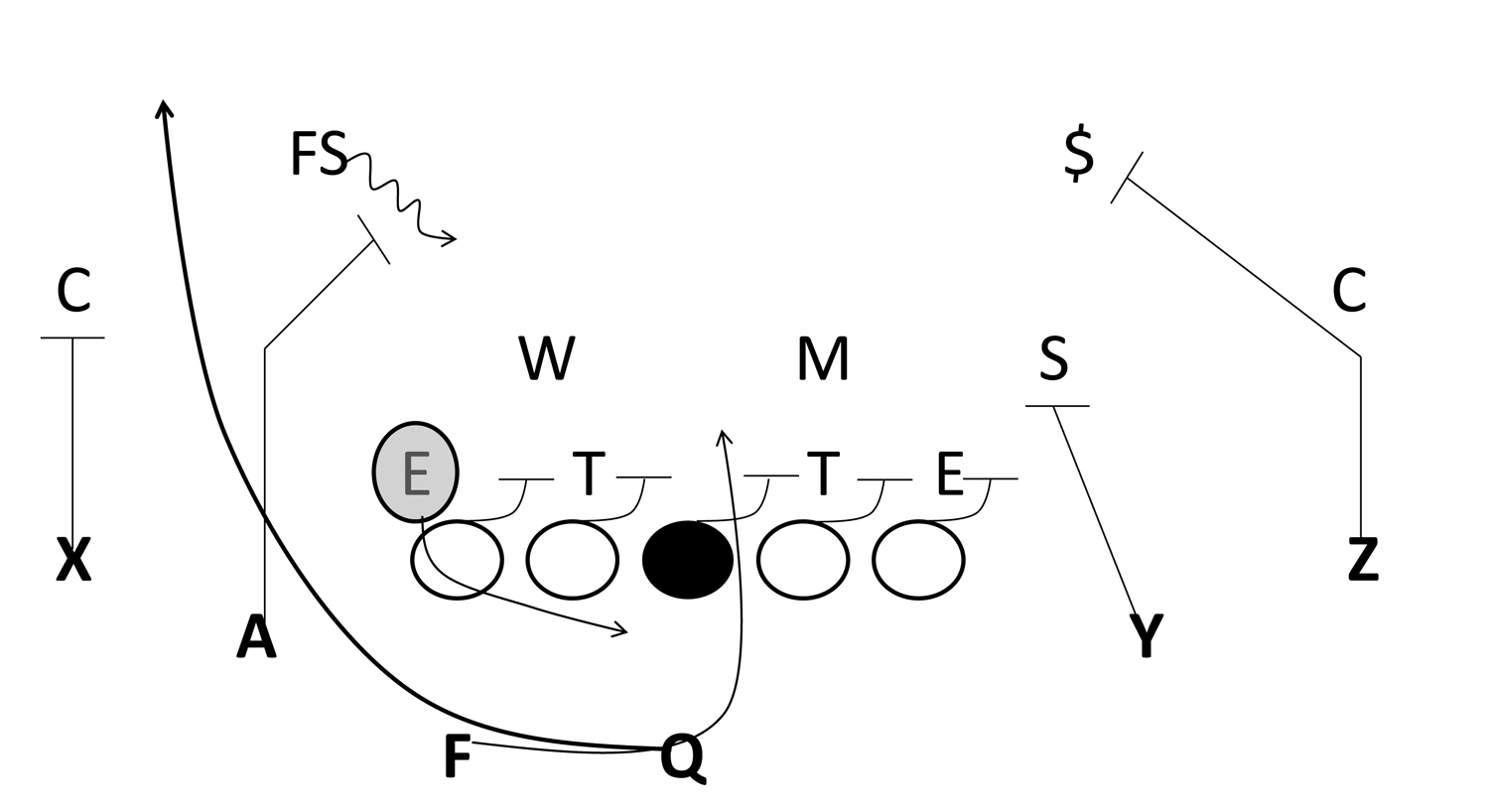
Diagram 7.
Coach Tenyer answers your questions on Facebook - just go to https://www.facebook.com/AmericanFootballMonthly/
Want More? Here are more articles from American Football Monthly
Packaging the Inside Zone with the Bubble Screen Out of a Stack Formation � April, 2010
Three Plays for the Spread Offense � July, 2008
Point-Counterpoint: The Screen Pass � February, 2006
About the Author: Rob Tenyer is in his 12th season as an assistant coach at Morehead State. He is in his second year as Offensive Coordinator after spending the previous five seasons as Recruiting Coordinator. Tenyer previously coached at Centre College and California University (PA). He received his bachelor�s degree from Olivet College in 1995 where he was a four-year letter winner at quarterback. Tenyer received his master�s degree from Morehead State in 2007.
